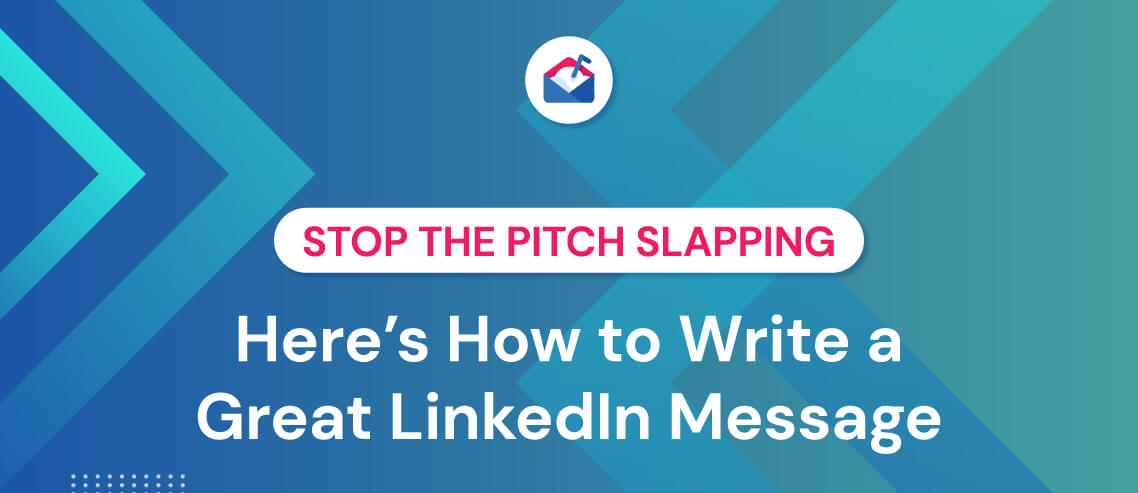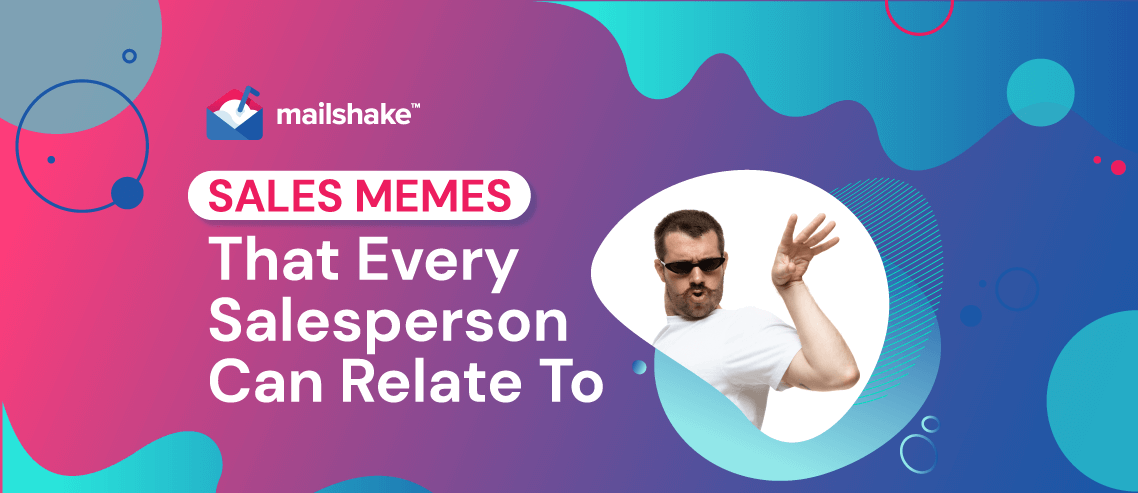Stop the Pitch Slapping. Here’s How to Write Great LinkedIn Messages.

Contents
LinkedIn InMail can be one of the most potent weapons in a salesperson’s armory. When it comes to generating responses from prospects, InMails have a hit rate of 10-25%, which is 300% higher than emails containing exactly the same content. But there’s a rampant trend that’s ruining LinkedIn InMail for everyone: pitch slapping.
InMails won’t work miracles for you. If your sales messaging is missing the mark, you won’t see results from direct messaging on LinkedIn. Pitch slapping never works!
What’s a pitch slap?
Whether or not you’re familiar with the term “pitch slap,” you’ve almost certainly been on the receiving end of one.
They’re the sort of messages that offer very little value but ask for a lot of commitment on your part. Often, there’ll be a vague, generic introduction – or no introduction at all – and a near-instant sales pitch for a product you’ve never heard of, don’t have a need for, and have no intention of buying. There’s no attempt made to strike up a two-way dialog and understand your business goals.
In short, it’s exactly the sort of interaction that gives sales a bad name.
What LinkedIn messages should I never send?
Fortunately, it’s pretty easy to avoid pitch slapping. Just make sure you never do any of the following:
Sending the default connection request
First impressions count, and you only get to make them once. So why would you ever use LinkedIn’s default connection message?
If you’re asking someone to commit a chunk of their budget to the product or solution you’re selling, the very least you can do is make a little effort when reaching out to them for the first time.
Relying on the default connection request is the exact opposite of that. It marks you out as a lazy salesperson who doesn’t care enough about the interaction to craft a personalized, engaging message. Simply put, it gives prospects no incentive to accept or respond.
Sending a sales pitch for your product or service
According to research from CSO Insights, three-quarters of B2B sales to new customers take at least four months to close, while almost half take seven or more months. It’s hardly surprising. Decision-making processes are becoming ever-more complex and products are becoming increasingly sophisticated.
All of which means the chances of closing the deal with a single LinkedIn message are next to zero. Even if your product was 100% free for life, most businesses would still want to find out more before they started using it.
Yet despite this, many reps still persist with the outdated approach of sending an immediate sales pitch through a LinkedIn message. When it inevitably fails, they move on to the next prospect and do the exact same thing.
All they’re doing is burning through prospect lists and damaging their company’s reputation.
Asking for more than you’re prepared to give
Another common “pitch slap” is for a rep to ask for a recommendation from one of their current connections.
The logic here is at least relatively sound, with HubSpot discovering that word of mouth and customer recommendations are the top two sources of new business referrals.
However, while it’s completely reasonable to ask a longstanding customer for a recommendation, it definitely isn’t reasonable to reach out to someone you barely know and ask them to put their neck on the line for you.
A good rule of thumb is: if you’re not prepared to recommend a person because you don’t know enough about them, don’t ask them to do the same for you.
Treating LinkedIn as a dating site
According to Pew Research, 5% of men and 16% of women have been sexually harassed online, rising to 11% and 33% respectively among under-35s.
Sexual harassment is unacceptable in any context and on any platform, and LinkedIn is definitely not an exception. Yet there are countless articles recounting the experiences of LinkedIn users – predominantly young women – who have received inappropriate messages via the social networking site.
While this should go without saying, LinkedIn is a professional networking platform, not a dating site. It’s never appropriate to comment on someone’s appearance, even if you think you’re “just being nice”. Don’t do it.
How do I write a great LinkedIn message?
Now that we’ve discussed how to avoid inadvertently (or deliberately) pitch-slapping someone on LinkedIn, here are four pointers to help you craft stronger, more engaging messages.
Start with a specific title
Just like with email outreach, a strong subject line makes it much more likely your LinkedIn message will be opened and read.
To write effective subject lines, start by defining your relationship with the person you’re reaching out to:
- Is this someone you actually know?
- If so, have you met them in person?
- Do you have any shared connections?
That information will help you create a more specific subject. For instance, if you met the person in question at a recent conference, write something like: “Following up from [event name].” The key here is to make it clear you’re not just some random stranger.
Make a personal connection in your opening
Don’t even think about doing cold outreach on LinkedIn without first finding out some specific details about your prospect to help personalize your message. Their LinkedIn profile is only a click away and contains all the information you need to form a more personal connection. Ideally, you’ll be able to find things you have in common. For instance:
- Did you go to the same school?
- Are you from the same state?
- Have you both worked with the same person?
- Did you attend the same event?
Reference any commonalities early in your message to help break the ice and lay the groundwork for a more meaningful, two-way conversation.
Be brief
LinkedIn’s own data shows that 57% of the site’s traffic comes from mobile. That means there’s a good chance your message will be read on a small screen, so you need to make every character count.
If your prospect opens up your message to see multiple screens of text, don’t expect them to make it to the end, let alone take the time to reply.
Always aim to get your point across in as few words as possible. If you can do that in two or three sentences, that’s fantastic. But as a general rule, don’t exceed two relatively short paragraphs, each comprising no more than two or three sentences.
Can’t get all your points across in so few words? Chances are your message is too complicated. Remember, the aim here is to get a conversation going, not to close the deal in a single message. Leave any extraneous details for your follow-up messages.
Show gratitude
People are busy, so don’t forget to thank them for taking the time to read your message (and hopefully respond). At the same time, make it clear what you want them to do next. Do you want them to book a call with you? Accept your connection? Recommend you to a colleague?
Conclusion
It’s easy to write a non-personalized LinkedIn sales message that speaks to the generic features and benefits of your product.
It’s much harder to tailor that message to the specific needs of each individual prospect and give them a compelling reason to respond.
That’s why pitch slapping is so prevalent. But it’s lazy and it doesn’t work. Give yourself the time to write great LinkedIn messages each and every time, and you’ll definitely see better results.





